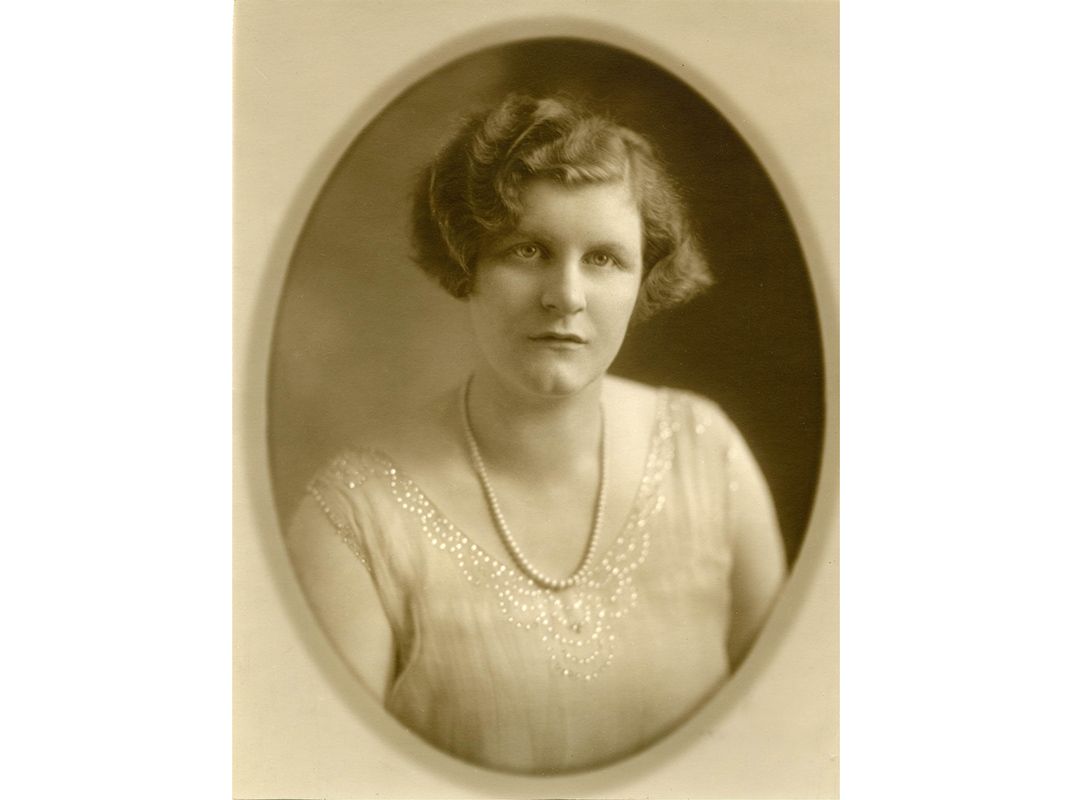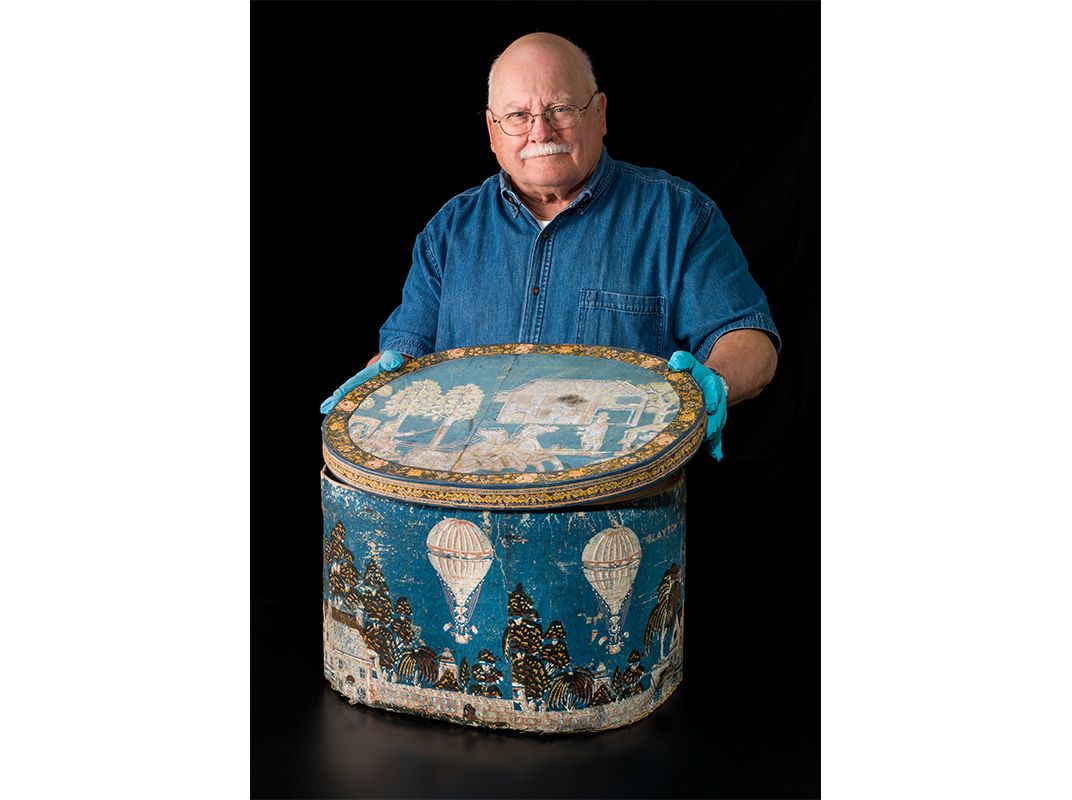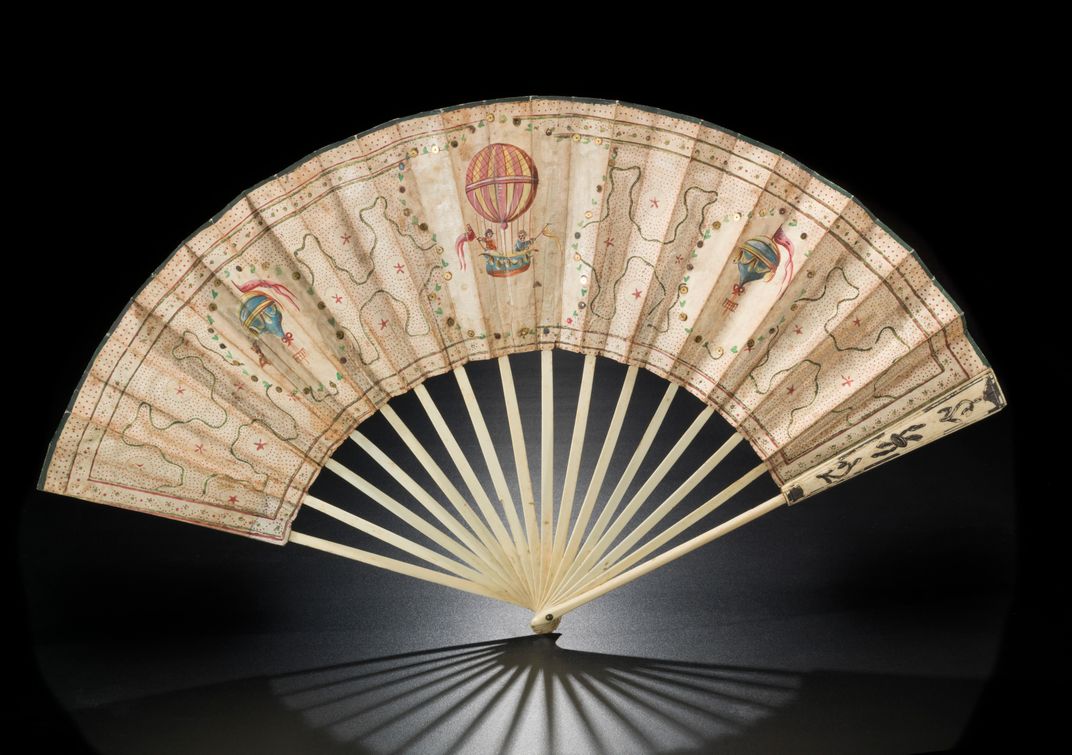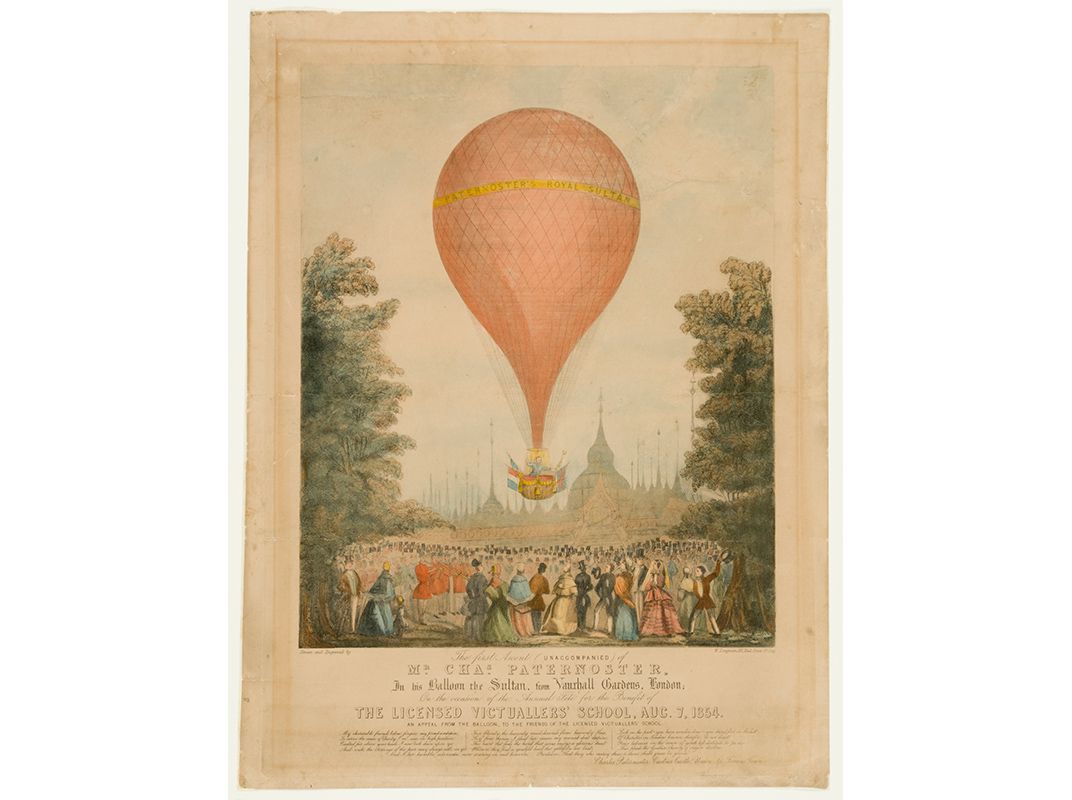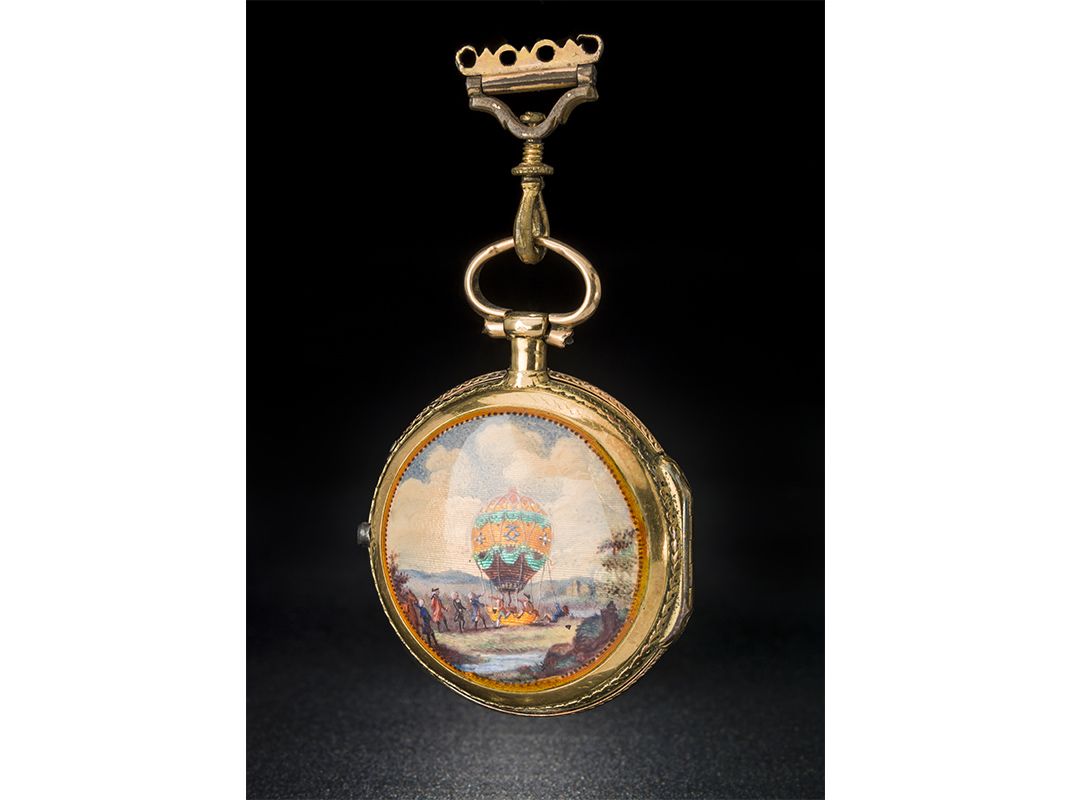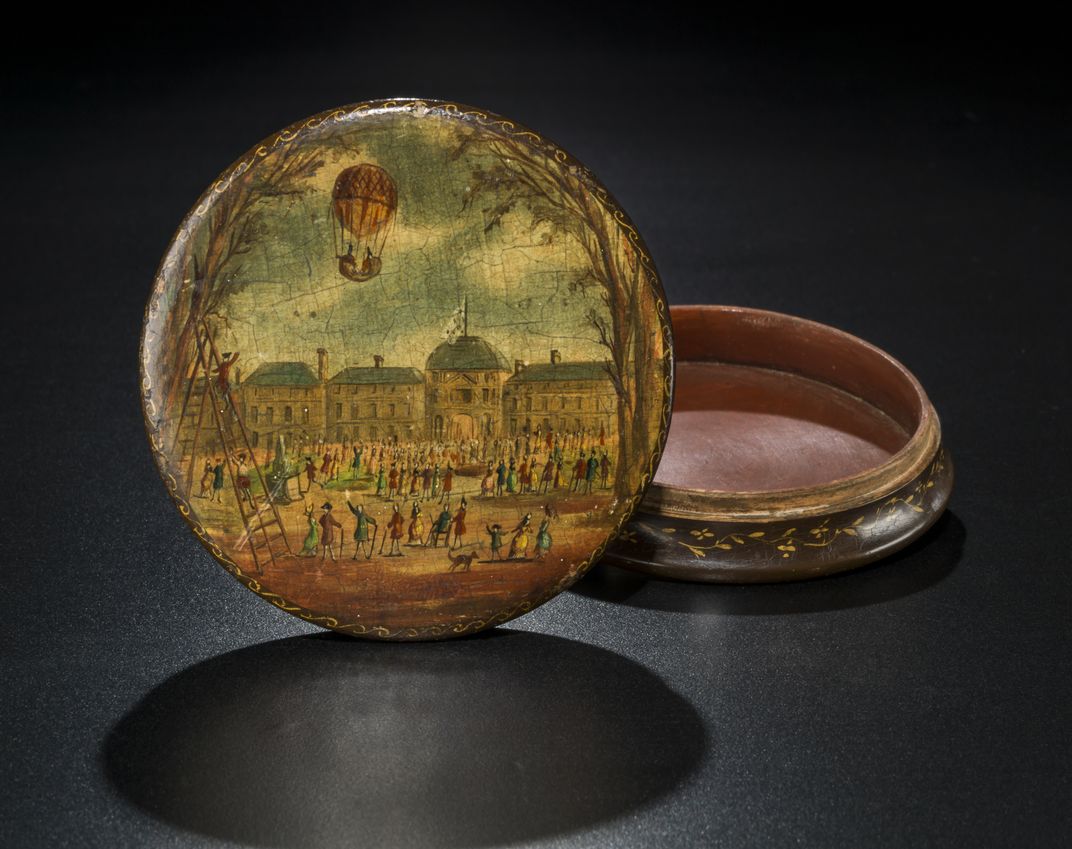Mementos of the Balloon Age
Evelyn Kendall’s collection of early flight artifacts lands at the Museum.
/https://tf-cmsv2-smithsonianmag-media.s3.amazonaws.com/filer/a5/02/a502123a-7fed-42f6-b6d0-8c2d33168dbb/16c_sep2015_t20140072061_nasm2014-06569_live.jpg)
Evelyn Way Kendall’s passion for ballooning may have been inspired by her father’s 1921 encounter with a trio of U.S. Navy aeronauts who had to be rescued after landing deep in the Ontario wilderness. Kendall’s father, a superintendent with the Canadian National Railways, helped rescue the three balloonists, who had been caught in a storm and carried deep into the wild lowlands around Hudson Bay. One can imagine his daughter on vacation in Paris a year or so later, walking past an antiques shop and spying in the window an 18th century snuffbox or needle case decorated with a balloon and, remembering her father’s role in a balloon adventure, succumbing to temptation. In any case, she had discovered a rich collecting field.
The sight of the first balloons rising above the Paris skyline in 1783 had generated an unprecedented wave of excitement that swept across Europe. Tens of thousands of spectators crowded the streets of Paris, London, and other European cities to catch a glimpse of human beings in flight. People flocked to print shops to obtain images of the colorful balloons and the men and women who flew them.
In the early 1920s, Evelyn Kendall (1893–1979), the Canadian-born wife of Boston-based textile manufacturer Henry Plimpton Kendall, began to search antique shops and auction catalogues on two continents for items commemorating the birth of flight. She spent 40 years building one of the largest, most diverse and comprehensive private collections of objects and images documenting the birth of the air age. The treasures of the collection include oil and watercolor paintings of balloon flights in Europe, America, and Japan. More than 400 historic prints and hand-painted engravings depict early flights. Eighteenth century needle cases, snuffboxes, match safes, card cases, jewelry, clocks, wallpaper, ceramic items, and sheet music, all decorated with images of balloons, testify to the sense of awe and wonder experienced by those who witnessed the first human beings rising into the air. There are delicately painted fans created in Paris before the French Revolution. A colorful hatbox covered in wallpaper commemorates a balloon flight from Cincinnati, Ohio, in 1835. A large oil painting shows the Union Army Balloon Corps camp on the Virginia peninsula in 1862. Rare books and scrapbooks filled with newspaper clippings chronicle the history of ballooning from the 1780s to the 1890s.
After a year of negotiations and visits to a wonderful archive in Sharon, Massachusetts, where the collection was stored, the Kendall collection arrived at the Museum’s Steven F. Udvar-Hazy Center in Virginia on July 25, 2014. The collection comes to the Museum through the generosity of the Norfolk Charitable Trust, which also supported shipping, processing, and conservation costs.
The Kendalls were collectors with broad and diverse interests. They presented their collection of early Southern maps, prints, and manuscripts to the University of South Carolina. The pair spent decades filling entire storage facilities with whaling equipment, art, and memorabilia, all of which went to the New Bedford Whaling Museum. Evelyn Kendall donated her collection of antique costumes and fabrics to the Royal Ontario Museum.
Museum staff are cataloging and conserving the Evelyn Way Kendall Ballooning and Early Aviation Collection, most of which has never been exhibited to the public. Plans for exhibition of the collection and for its presentation on the Web are under way.
